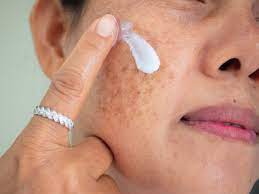Page Contents
Introduction:
Melasma, often referred to as “the mask of pregnancy,” is a common skin condition characterized by brown to gray-brown patches on the face. Its impact extends far beyond the physical realm, affecting individuals’ self-esteem and confidence. The quest for effective melasma treatment has led many to explore various options, from topical creams to laser therapy and lifestyle modifications. In this comprehensive guide, we’ll delve deep into the world of melasma treatment, exploring its causes, prevention strategies, and the most effective treatments available today.
Understanding Melasma:
In addition to hormonal changes and sun exposure, other factors may also play a role in the development of melasma. One such factor is genetic predisposition, as individuals with a family history of melasma are more likely to experience it themselves. Furthermore, certain medications and cosmetics containing photosensitizing agents can contribute to the onset or worsening of melasma. For instance, drugs like hormone replacement therapy (HRT) or anticonvulsants may increase the risk of developing this condition.
Moreover, melasma is more common in individuals with darker skin tones, suggesting that melanin production and distribution may also influence its occurrence. This hyperpigmentation disorder typically manifests as brown or gray-brown patches on the face, particularly on the forehead, cheeks, nose, and upper lip. While melasma is not harmful or contagious, it can cause significant psychological distress due to its impact on appearance. Understanding these underlying causes is crucial for developing effective treatment strategies and preventive measures to manage melasma effectively.
Prevention Strategies:
While melasma can be challenging to prevent entirely, there are several strategies individuals can implement to minimize its occurrence and reduce the risk of exacerbating existing patches. Sun protection is paramount, with broad-spectrum sunscreen and protective clothing playing pivotal roles in shielding the skin from harmful UV rays. Additionally, avoiding hormonal triggers, such as oral contraceptives or hormone replacement therapy, and adopting a gentle skincare routine can help manage melasma and prevent its progression. Incorporating antioxidants into your skincare regimen can also provide additional protection against environmental stressors.
Topical Melasma Treatment:
Topical treatments are often the first line of defense against melasma. These include ingredients such as hydroquinone, retinoids, corticosteroids, and kojic acid, which work to lighten hyperpigmented areas and even out skin tone. Hydroquinone, in particular, inhibits melanin production by melanocytes, leading to a reduction in pigmentation over time. Retinoids, such as tretinoin, promote cell turnover and enhance the penetration of other active ingredients, making them valuable additions to melasma treatment regimens. While these topical agents can yield significant improvements in melasma, they must be used consistently and under the guidance of a dermatologist to minimize the risk of adverse effects, such as irritation or rebound hyperpigmentation.
Procedures and Therapies:
For those seeking more aggressive treatment options, various procedures and therapies are available to address melasma. These include chemical peels, microdermabrasion, laser therapy, and intense pulsed light (IPL) treatments. Chemical peels, such as those containing glycolic acid or trichloroacetic acid (TCA), exfoliate the outer layers of the skin, leading to a reduction in pigmentation and a more even complexion. Microdermabrasion utilizes a handheld device to gently sand away the outer layer of skin, stimulating collagen production and promoting skin renewal. Laser therapy and IPL treatments target melanin in the skin, breaking it down and reducing pigmentation without damaging surrounding tissue. While these procedures can yield dramatic results, they may require multiple sessions and carry the risk of adverse effects, such as post-inflammatory hyperpigmentation or scarring.
Combination Therapies:
Combining different treatment modalities often yields superior results in managing melasma. Whether it’s pairing topical creams with laser therapy or incorporating chemical peels into a comprehensive skincare routine, combination therapies can address melasma from multiple angles, maximizing efficacy and minimizing adverse effects. For example, combining hydroquinone with retinoids and corticosteroids can enhance the lightening effects while minimizing irritation. Similarly, combining laser therapy with topical antioxidants can improve outcomes and reduce the risk of post-treatment pigmentation. Dermatologists may tailor combination therapies to individual patient needs, taking into account factors such as skin type, severity of melasma, and treatment goals.
Lifestyle Modifications:
In addition to medical treatments, certain lifestyle modifications can complement melasma management efforts. Dietary changes, stress reduction techniques, and holistic approaches such as acupuncture and herbal remedies may offer supplemental benefits in controlling melasma and promoting overall skin health. Consuming a diet rich in antioxidants, such as fruits, vegetables, and green tea, can help protect the skin from oxidative stress and inflammation. Stress reduction techniques, such as mindfulness meditation or yoga, can help balance hormone levels and reduce cortisol-induced pigmentation. While lifestyle modifications alone may not be sufficient to treat melasma, they can enhance the efficacy of medical treatments and promote long-term skin health.
The Role of Dermatologists for Melasma Treatment:
Dermatologists play a crucial role in the diagnosis and treatment of melasma. From conducting thorough evaluations to devising personalized treatment plans, dermatologists possess the expertise and resources necessary to effectively manage this challenging condition. During the initial consultation, dermatologists will assess the severity of melasma, identify potential triggers, and discuss treatment options tailored to individual patient needs. Follow-up appointments allow for ongoing evaluation and adjustment of treatment regimens to optimize outcomes. Dermatologists may also provide guidance on sun protection, skincare products, and lifestyle modifications to support melasma management efforts. By partnering with a dermatologist, individuals can access comprehensive care and achieve the best possible results in their melasma treatment journey.
Managing Expectations:
It’s essential for individuals undergoing melasma treatment to manage their expectations realistically. While significant improvements can often be achieved, complete resolution may not always be possible. Melasma is a chronic condition that requires long-term management and consistent adherence to treatment protocols. Patience, consistency, and communication with your dermatologist are key factors in achieving desirable outcomes. It’s also essential to understand that melasma may recur or worsen with sun exposure, hormonal fluctuations, or certain medications. By setting realistic expectations and committing to a holistic approach to skincare, individuals can navigate the ups and downs of melasma treatment with confidence and resilience.
Empowering Individuals:
Above all, empowering individuals with knowledge and resources is crucial in the journey towards effective melasma treatment. By understanding the underlying causes, exploring evidence-based treatment options, and adopting a comprehensive approach to skincare, individuals can take control of their melasma and regain confidence in their skin. Education is empowering, and by arming themselves with information, individuals can make informed decisions about their treatment and advocate for their skincare needs. Support from healthcare providers, loved ones, and online communities can also provide encouragement and guidance throughout the melasma treatment journey. Remember, you’re not alone in your struggle with melasma, and there are resources and solutions available to help you achieve clearer, more radiant skin.
Conclusion:
Melasma treatment is a multifaceted journey that requires patience, persistence, and professional guidance. By understanding the underlying causes, exploring various treatment modalities, and adopting a comprehensive approach to skincare, individuals can effectively manage melasma and achieve clearer, more even-toned skin. Whether through topical treatments, procedures, lifestyle modifications, or a combination thereof, there is hope for those seeking to unveil the truth behind melasma treatment and reclaim their confidence. Remember, every step you take towards melasma management is a step towards healthier, happier skin. Embrace the journey, celebrate your progress, and never hesitate to reach out for support when needed. Together, we can empower individuals to overcome melasma and embrace their natural beauty with confidence and resilience.
Also read: The Truth About Whitening Creams: Benefits, Risks, and Choosing…




